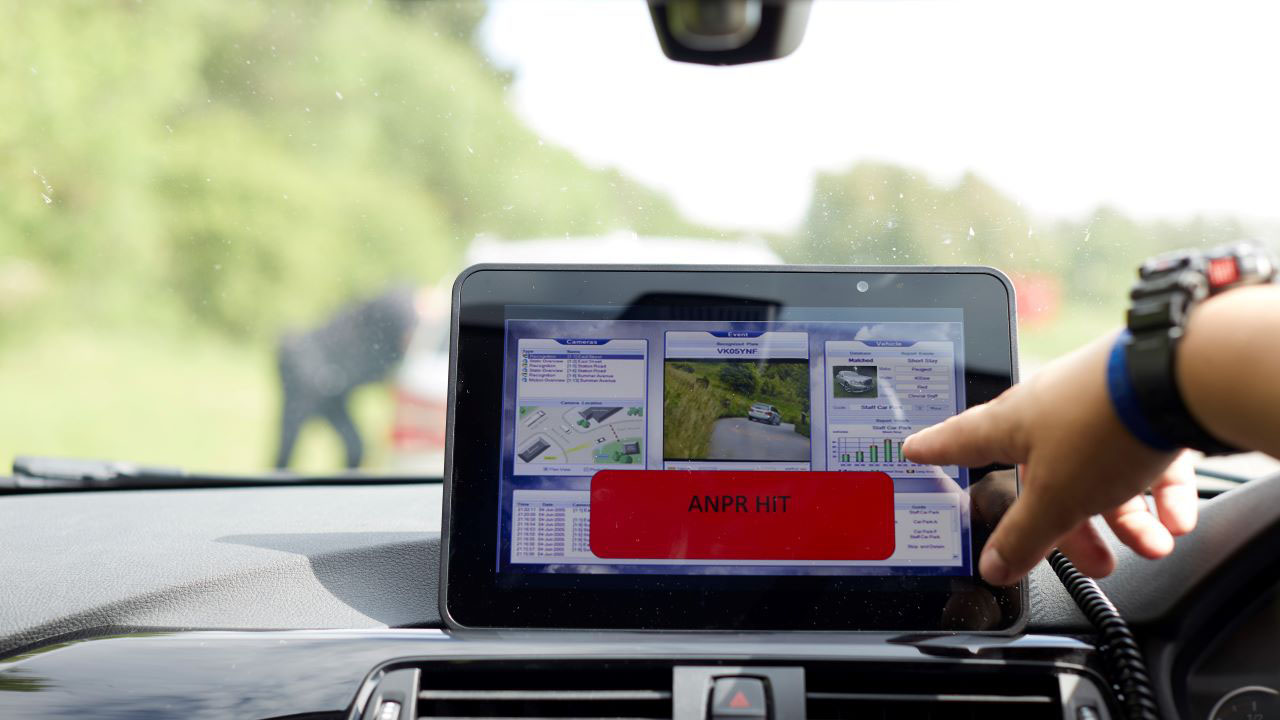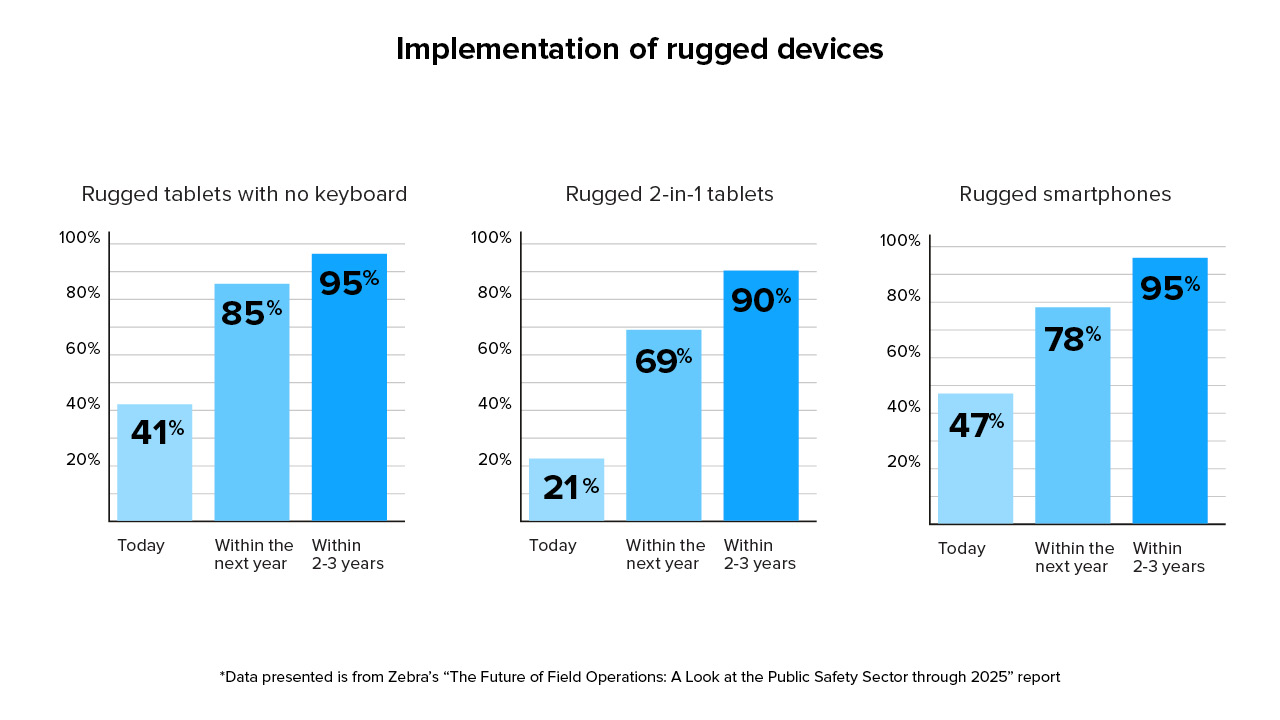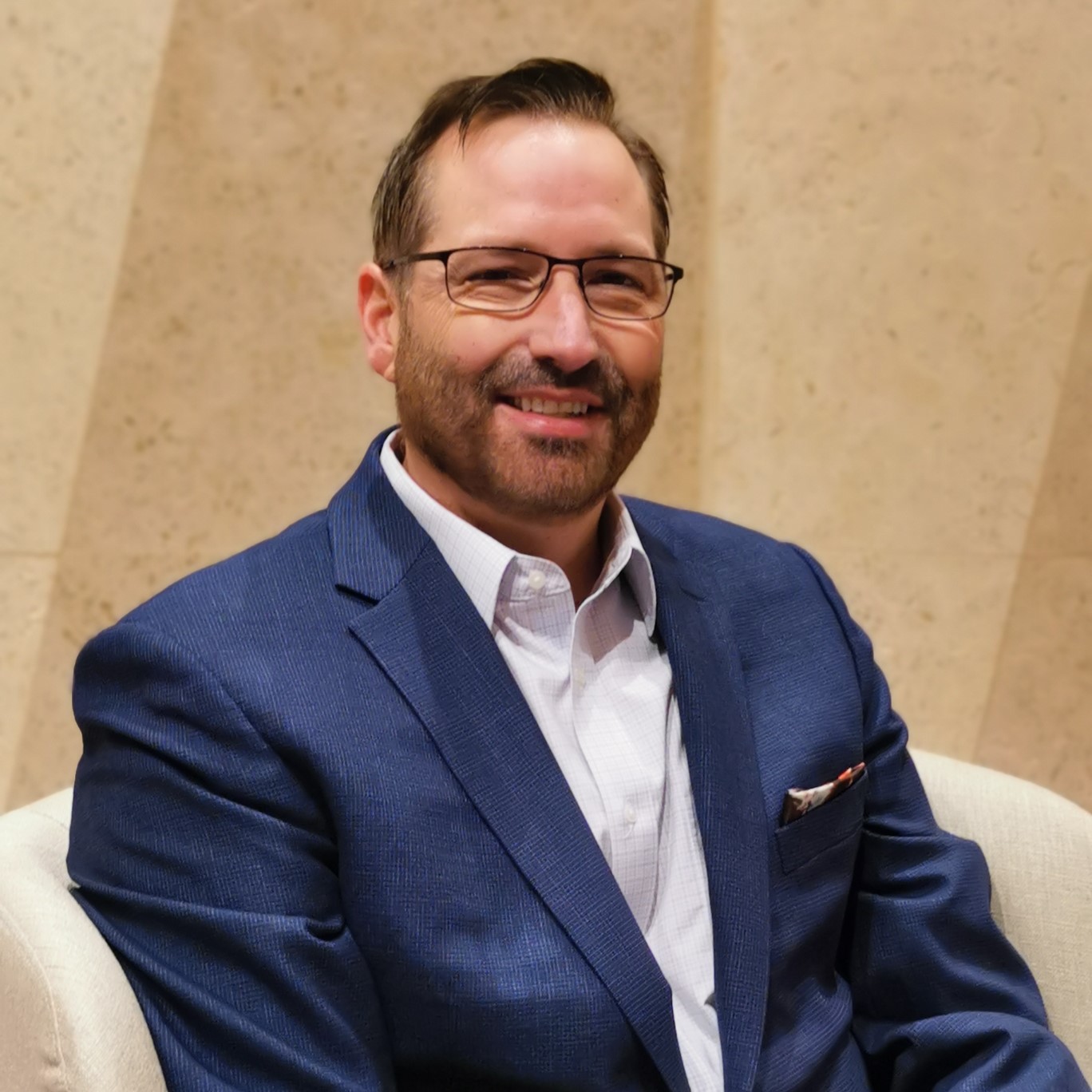
Public Safety Needs to Mobilize Right Now – but It Must Be Done the Right Way
Zebra’s latest Future of Field Operations Study revealed some technology – and, therefore, operational – challenges that public safety agencies have been facing over the past several months. None are the result of the COVID-19 outbreak. Although they are certainly being amplified by the extreme response efforts being put forth by every law enforcement agency, fire department and emergency medical services crew around the world right now.
As discussed in a recent blog, it is important to give first responders mobile devices that can help protect them and those that they’re trying to help – devices that provide situational awareness, reliable communications channels and social distancing tools. The post also discussed the security and personal safety considerations that must be made when choosing technology tools for field-based teams, emphasizing the benefits of rugged mobility solutions in all of these areas. Those agencies that have put enterprise-level rugged mobile devices in the field are now able to reap some of their exclusive benefits: easier to use outside in bright sunshine, rain, snow and dust alike; long-range scanning; longer battery runtimes; and the much higher reliability and durability levels in exhaustive, around-the-clock use cases.
For agencies that chose consumer-grade devices during “normal” times, that is what they’ll need to use for a while most likely. With limited in-office IT staffing and the new heavy workload of police, EMT and fire department personnel working to protect themselves and the public from COVID-19, it is unlikely that a move to enterprise-class mobile devices could happen anytime soon. The consumer-grade devices won’t aid as much with social distancing and are harder to disinfect, but I know those first responders will take that into account and use them less so as to reduce the risk.
Remember: there is a lot of nuanced engineering that must go into any device whose prime design focus is for use in a law enforcement, firefighting or emergency response environment. Yes, it must be rugged. More importantly, though, a fire department might need a device that can withstand the elements for prolonged periods of time and EMS techs might need a device that can be thoroughly disinfected to strict healthcare standards. (We’re not talking about a quick wipe down by your average household Clorox cloth, either.)
Then there’s the need to connect ancillary devices in patrol vehicles or fire trucks when devices are mounted and when other technology tools need to be used in tandem with the mobile device in ambulances – monitoring patient oxygen levels or accessing secure pharmaceutical vaults en-route to the hospital, for instance.
Many things that public safety agencies must consider when weighing the pros and cons of rugged vs. non-rugged mobile devices are discussed in this past blog post. The benefits of enterprise rugged devices versus consumer rugged devices beyond the physicality have also been extensively outlined in past discussions.
But please do consider this every time you’re evaluating mobile technologies for your first responders…
Some police officers are trained for pursuit driving at specialized facilities (usually a racetrack), with police interceptor-type training cars and skilled instructors. Drills focus on handling these cars at high speeds on different road conditions, and often include actual contact with “perpetrator” cars.
How well are these officers trained? At the best training facilities, the best officers become some of the best drivers in the world. Like mobile computers, these training facilities and instructors must meet minimum thresholds to secure ratings. But how far they go above and beyond those levels is the difference between just holding a certificate and being highly skilled when this dangerous but important action occurs out in the real world.
For example, the Houston Police Academy has a facility for pursuit training and, a few years ago, the Porsche Club rented it for driver’s education for the novice up to advanced drivers. After a day of Porsches flying around the track, everyone was picking up cones and loading up in the paddock. A police officer nonchalantly walked out of the office, got into a Crown Vic and, with tires squealing, drove around the track faster than any of the Porsches had. Same training facility, different training standards. You could compare police officers trained in pursuit driving with new drivers pulling out of the DMV in a similar vein: both have the same driver’s license in their pocket even though the skill levels are dramatically different. Who would you rather be in the car with during a chase?
The point is that just because a tablet has an IP68 rating and is marketed as “rugged” doesn’t mean that it meets the rugged mobility standards set by public safety agencies – which have always been among the highest of any sector.
All public safety technology tools warrant close evaluation by IT and field teams from a functional perspective. Once your public safety agency defines all potential operating environments, you’ll be able to short-list your “real” rugged device options. In doing so, you may realize that you don’t need to an IP68-rated device, which is the benchmark used by many consumer device manufacturers to make their devices more marketable, and that an IP67, IP65 or even IP54 device might be more than sufficient.
Don’t Forget: Form Factor Does Factor into First Responder Speed, Effectiveness
So, which rugged devices fit the best into public safety’s unique mobile computing criteria set? While each agency will have to make this determination based on desired use cases, operational goals and front-line personnel feedback, you can see what your peers have chosen in the past in the below excerpt from Zebra’s “Future of Field Operations” study report.

Before glancing at these results, you might have expected to see rugged notebooks as the most frequently deployed mobile computing form factor. For years, they were easy to spot in the field, often mounted in police cars or fire trucks, rarely if ever to be moved out of the vehicle due to their heavy design and lack of true mobility. But that is not what we see here in the survey results.
Zebra’s latest study results line up well withthe raw data obtained in a 2019 survey conducted by Xplore Technologies, which was later acquired by Zebra. That survey had a comment field, and most officers who had been issued laptops by their agencies noted in the comments that they only used laptops because that’s what they were issued. They repeatedly said that they would actually prefer a mobile computer that was more, well, mobile. Worth noting again is the fact that there were “a few who willingly chose a laptop, but only because they assumed that the tablets that they would be using on the clock are the same consumer devices they use in their personal lives and, thus, share the same weaknesses when it comes to durability, connectivity and capabilities.”
This reinforces the notion that public safety professionals appreciate the value of technology in the field – they are trained to use technology to better sense, analyze and act in threatening or time-sensitive situations – but that they understand that technology is only a valuable tool when it can be trusted not to fail in mission-critical situations.
Perhaps that is why this more recent survey shows agency preferences swaying more toward rugged tablets, with or without rugged physical keyboards, along with rugged smartphones and increased investments in both form factors dominating the future timeline. The men and women working to protect our communities are down-to-earth people, focused on the everyday as well as the exceptional, just like their friends, family and neighbors who chose professions in retail, healthcare, hospitality and other customer service-oriented jobs. And despite the reality that the next call could be the most serious of their career, when they are talking with technology providers, they are concerned about similar issues expressed many mobile workers.
They know that if they give technology solution providers the unvarnished truth about the hazards, stresses and expectations of their jobs, they can help ensure that the everyday technology tools that their agency buys will also be ready and able to fully support their intelligence, communication and collaboration needs during the next, inevitable crisis situation. What they want are reliable mobile devices that work outside of the vehicle in any situation, run all of the modern digital applications they need to complete their jobs 100 percent in the field, connect to relevant information systems and keep them in contact with dispatch, headquarters and other first responders to execute a truly coordinated effort.
Not too much to ask, is it?
###
Editor’s Note:
If missed Alex’s recent Facebook Live discussion with AllThingsFirstNet.com, you can check it out here.
He also sat down last month with John Morrison from Battalion 3 Technologies for an IWCE Virtual Connections Webinar to discuss how technology can help maintain accountability and improve firefighter safety on the scene. Listen to the replay now.
Other Related Resources:
- Stories from the Edge: Troy Police Department Says Tablets Ensure Officers are “Always Available”
- Governments’ Emergency Response Plans are Only Effective If Emergency Responders Have the Means to Execute Them
- Coordination is Key to Mobilizing First Responders in an Emergency. So, Should Public Sector Agencies Sync Up Their Mobility Strategies?
- Ask the Expert: Now That Android Tablets are Rugged and Enterprise Ready, Should I Even Be Considering a Windows Tablet for My Workers Anymore?
- Ask the Expert: What Is the Best Way to Figure Out Which Rugged Tablet is “Best?”
- Disasters, Drones and Developing the Future Capabilities for Mobile Workers and First Responders

Alex Cooper
Alex Cooper is the Director of Government Strategy and Market Development at Zebra Technologies. In this role, he orchestrates the strategy to serve the needs of Public Safety and related agencies globally. Since joining the company in 2017, he has driven Zebra’s renewed commitment to the market, leveraging its leadership in rugged mobility and communications to deliver solutions that enhance operational readiness, real-time decision-making and efficiency.
Prior to joining Zebra, Mr. Cooper was Director of Global Strategy at Motorola Solutions, notably driving the Next-Gen Communications strategy leading to a teaming agreement with the winning bidder for the FirstNet RFP. He also drove efforts to acquire and integrate five companies, secured several strategic commercial agreements, and supported venture investments. Mr. Cooper spent his first five years at Motorola leading the computing and software services business to double digit revenue and profitability growth. Prior to this, he held operational roles at Siemens and Akebono.
Mr. Cooper holds an MBA from the Northwestern University Kellogg Graduate School of Management, and a Bachelor of Science from Northeastern University where he graduated magna cum laude.




